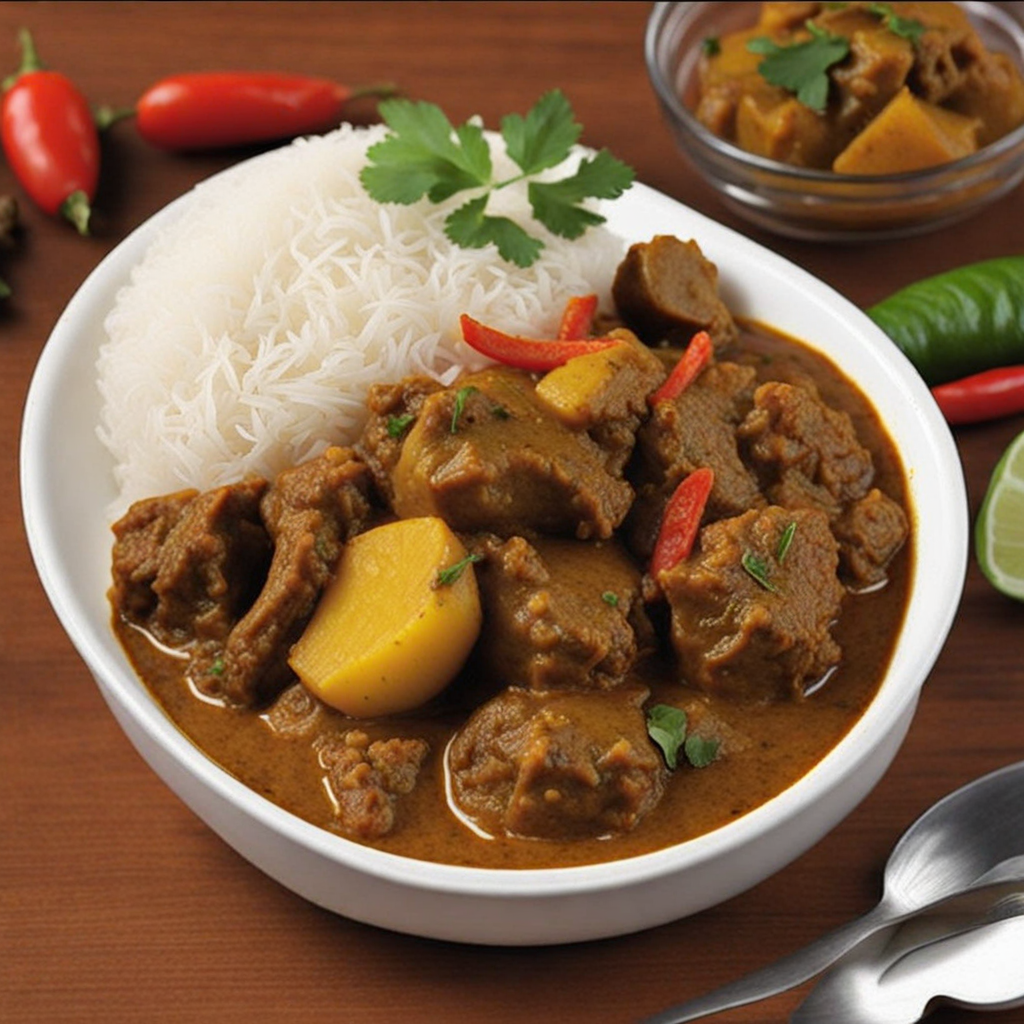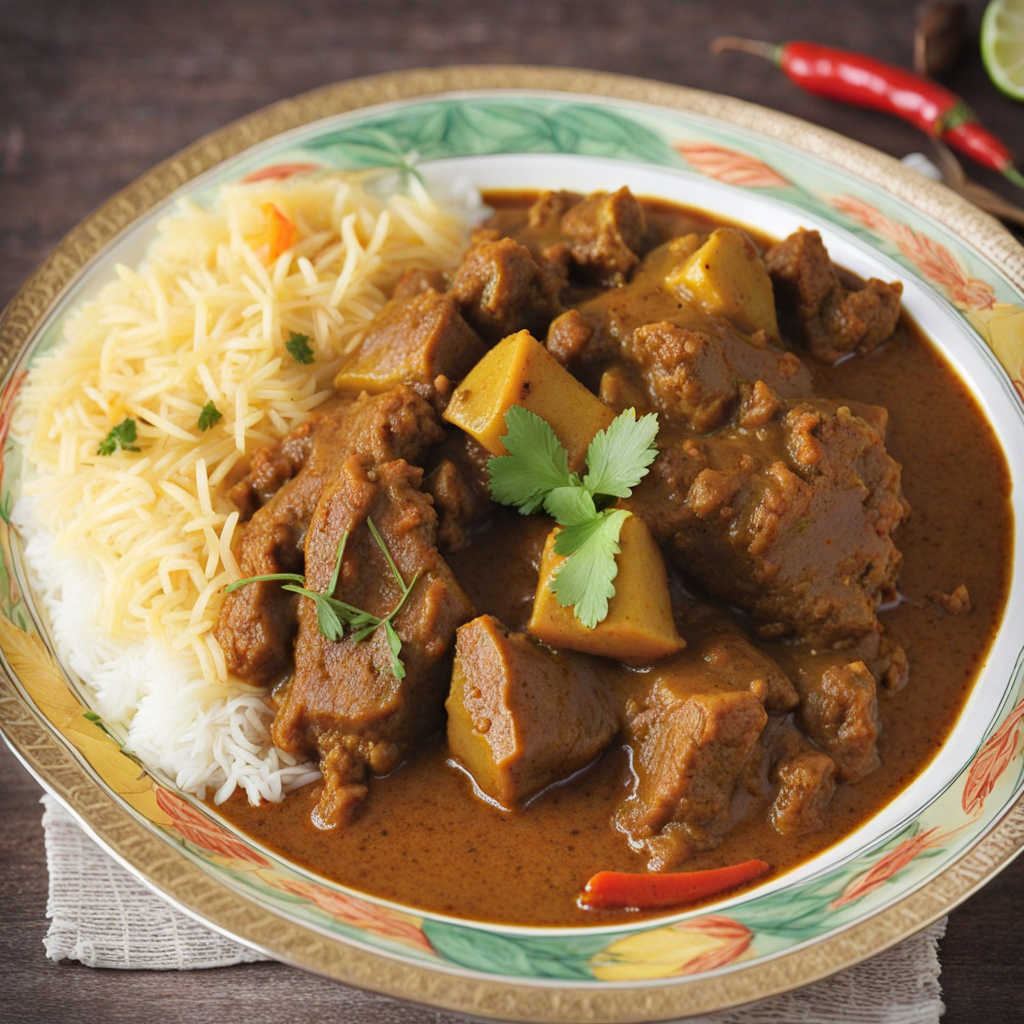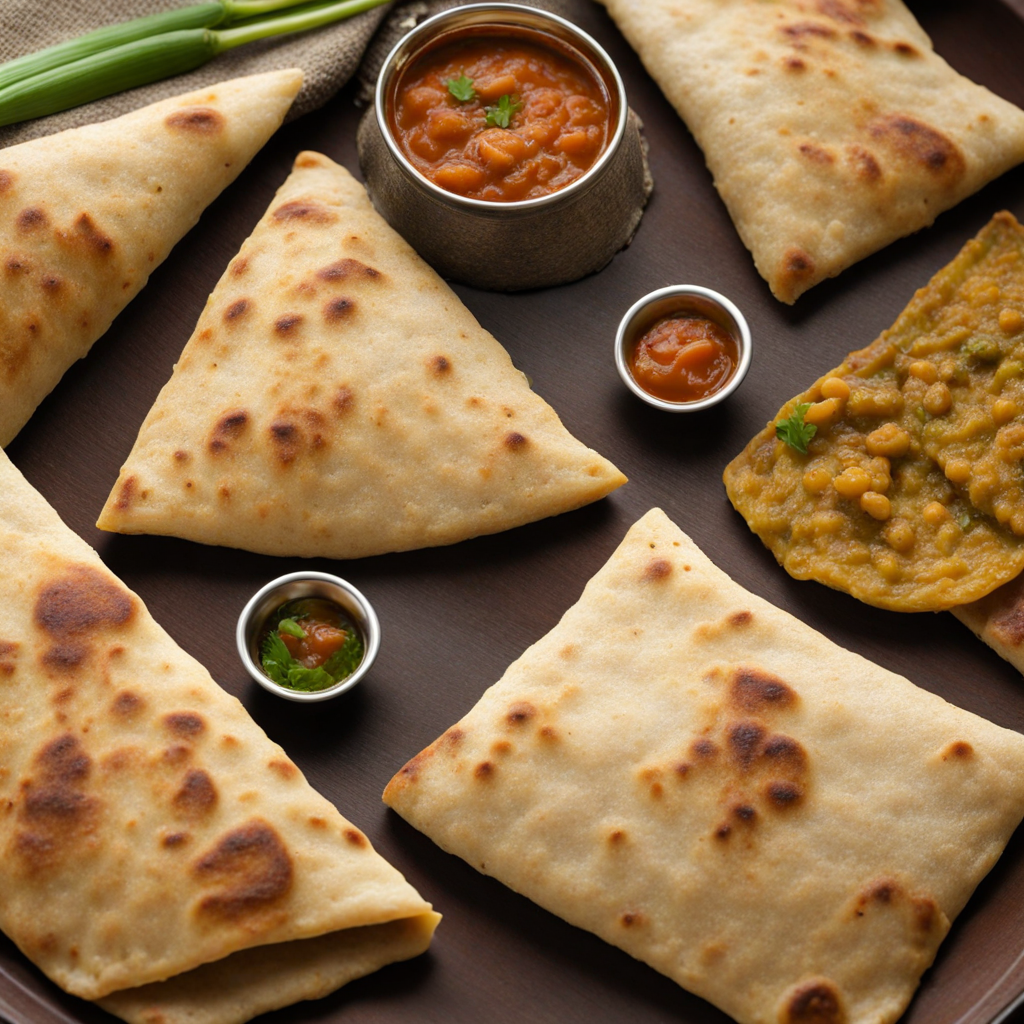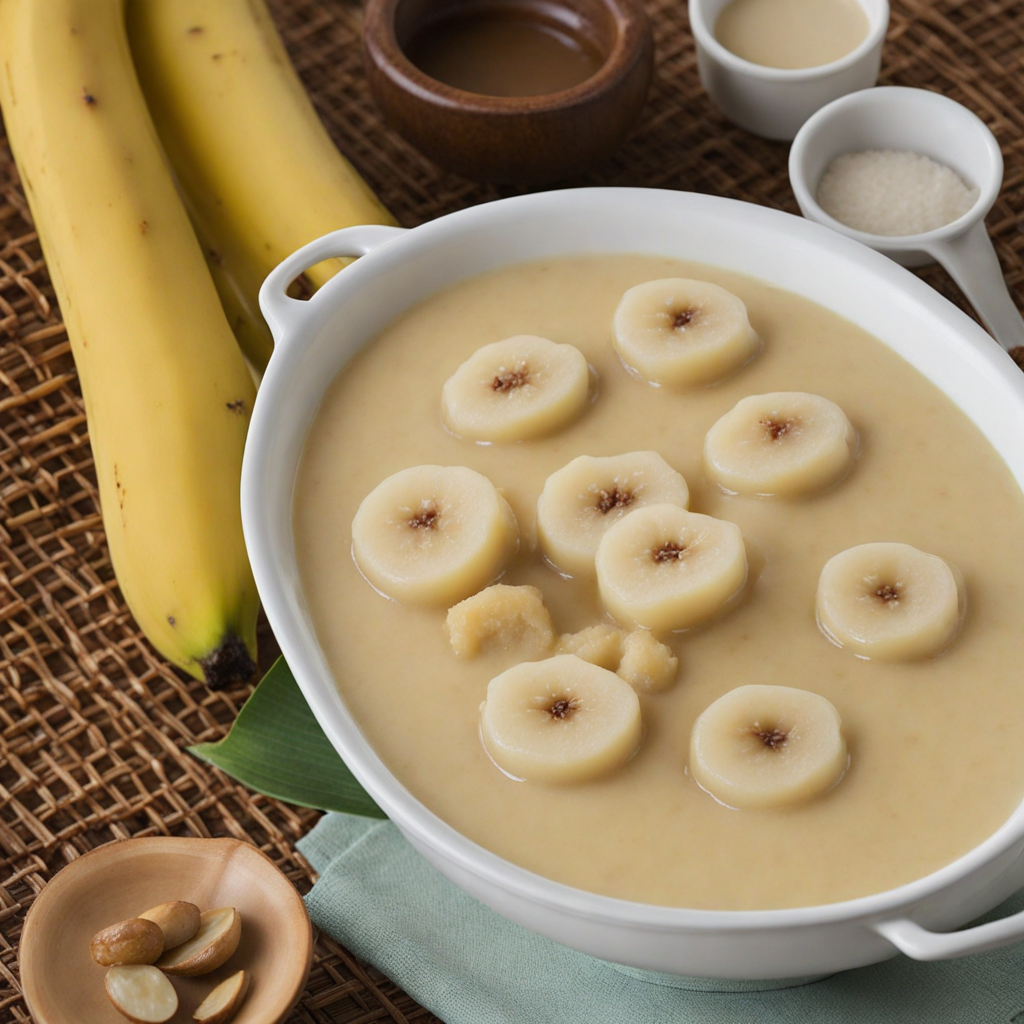Lamb Curry
Lamb Curry from Mauritius is a vibrant and aromatic dish that beautifully reflects the island's rich culinary heritage, influenced by a blend of Indian, Creole, and French cuisines. The tender pieces of lamb are slowly cooked in a rich, spiced gravy that features an array of ingredients such as garlic, ginger, onions, and tomatoes. The use of spices like cumin, coriander, turmeric, and garam masala creates a warm and complex flavor profile that envelops the lamb, making each bite a delightful experience. The curry is often simmered until the meat is fall-off-the-bone tender, allowing it to absorb all the aromatic spices and flavors, resulting in a comforting and hearty meal.
How It Became This Dish
The Culinary Journey of Kari Agneau: Mauritius’ Lamb Curry Introduction Kari Agneau, the beloved lamb curry from Mauritius, is more than just a dish; it is a tapestry woven from the island's rich history, multicultural influences, and culinary creativity. As Mauritius emerged as a melting pot of cultures over centuries, so too did its cuisine evolve, with Kari Agneau standing out as a particularly significant symbol of this culinary synthesis. Origins: A Cultural Melting Pot To understand the origins of Kari Agneau, one must first delve into the history of Mauritius itself. Discovered by the Portuguese in the 16th century and later colonized by the Dutch, French, and British, the island became a critical waypoint for maritime trade routes and a hub for sugar cultivation. This diverse colonial history laid the foundation for a vibrant multicultural society that includes influences from African, Indian, Chinese, and French cuisines. The term "Kari" is derived from the Indian word "kari," which means "to blacken," referring to the method of cooking that often involves frying spices and ingredients until they are richly aromatic. The influence of Indian cuisine is particularly significant, stemming from the arrival of indentured laborers in the 19th century who brought their culinary traditions with them. The use of spices like turmeric, cumin, and coriander reflects this Indian heritage, while the inclusion of lamb speaks to the French influence, where lamb has long been a favored protein. Cultural Significance Kari Agneau holds a special place in the heart of Mauritian culture. It is a dish that celebrates communal dining and the island's diverse heritage. Often served during family gatherings, festivals, and communal celebrations, it embodies the spirit of togetherness that is so integral to Mauritian life. The preparation of Kari Agneau is often a labor of love, with families passing down recipes through generations, each adding their personal touch or secret ingredient. The dish is also emblematic of the island's fusion cuisine. In Mauritius, food is a reflection of identity, where different communities come together to create something unique. Kari Agneau is a perfect example, showcasing how various culinary traditions can harmoniously coexist. The lamb curry is typically served with rice, a staple in Mauritian households, and accompanied by pickles and chutneys that further highlight the island's affinity for bold flavors. Development Over Time As Mauritius progressed into the 20th and 21st centuries, Kari Agneau continued to evolve. The post-independence era, beginning in 1968, saw a resurgence of interest in local culinary traditions, with chefs and home cooks alike experimenting with ingredients and techniques. The dish became a canvas for innovation, with many chefs incorporating modern culinary techniques while respecting traditional flavors. In recent years, there has been a growing emphasis on sustainability and local sourcing. Chefs are now more mindful of their ingredients, often opting for locally sourced lamb and organic spices. This shift not only supports local farmers but also enhances the quality and flavor of the dish. The use of fresh, local produce allows for a vibrant and aromatic curry that resonates with the island's agricultural bounty. The globalization of food culture has also played a role in the dish's evolution. With the rise of food tourism and the international popularity of Mauritian cuisine, Kari Agneau has found its way onto restaurant menus around the world. Chefs outside of Mauritius have embraced the dish, adapting it to local tastes while striving to maintain its authentic roots. This cross-cultural exchange has allowed Kari Agneau to gain recognition beyond the shores of Mauritius, showcasing the island's culinary identity on a global stage. Ingredients and Preparation At its core, Kari Agneau is a celebration of flavors and aromas. The dish typically features tender pieces of lamb, marinated with spices and herbs such as garlic, ginger, turmeric, and cilantro. The marination process is crucial, as it allows the meat to absorb the rich flavors, resulting in a tender and flavorful curry. The preparation begins with slow-cooking the lamb to achieve a melt-in-your-mouth texture, often accompanied by caramelized onions and tomatoes that form the base of the curry. The addition of coconut milk or yogurt can lend a creamy richness, balancing the spice and heat. While the traditional recipe remains a favorite, contemporary variations have emerged. Some chefs incorporate seasonal vegetables, while others play with alternative proteins like goat or chicken, adapting the dish to suit diverse palates. These adaptations do not dilute the essence of Kari Agneau but instead enrich its narrative, showcasing the dish's versatility and enduring appeal. Conclusion Kari Agneau is more than just a dish; it is a reflection of Mauritius' complex historical narrative and its rich cultural tapestry. From its roots in Indian and French culinary traditions to its modern interpretations, the lamb curry embodies the spirit of a nation that embraces diversity and celebrates community. Its journey from a humble home-cooked meal to a globally recognized dish illustrates the power of food as a unifying force, bringing people together across cultures and generations. As Mauritius continues to evolve, so too will Kari Agneau, adapting to contemporary tastes while remaining anchored in tradition. It stands as a testament to the island's rich culinary heritage, reminding us that food is not only sustenance but also a story waiting to be told—a story that is deeply intertwined with the identity of the people of Mauritius. Whether enjoyed at a family gathering or in a fine dining restaurant, Kari Agneau will undoubtedly continue to warm hearts and fill bellies for generations to come.
You may like
Discover local flavors from Mauritius







